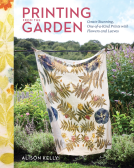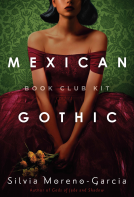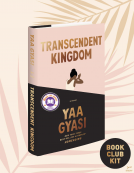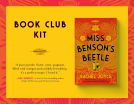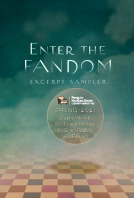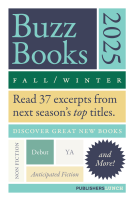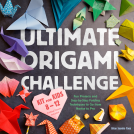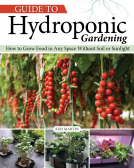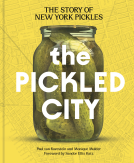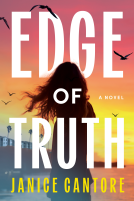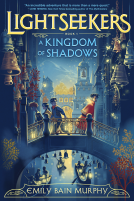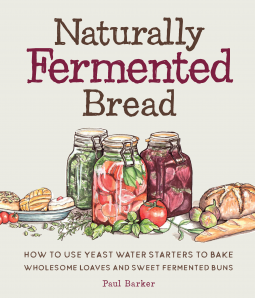
Naturally Fermented Bread
How to Use Yeast Water Starters to Bake Wholesome Loaves and Sweet Fermented Buns
by Paul Barker
This title was previously available on NetGalley and is now archived.
Send NetGalley books directly to your Kindle or Kindle app
1
To read on a Kindle or Kindle app, please add kindle@netgalley.com as an approved email address to receive files in your Amazon account. Click here for step-by-step instructions.
2
Also find your Kindle email address within your Amazon account, and enter it here.
Pub Date Oct 13 2020 | Archive Date Nov 12 2020
Quarto Publishing Group – Quarry | Quarry Books
Talking about this book? Use #NaturallyFermentedBread #NetGalley. More hashtag tips!
Description
Like sourdough baking, yeast-water or botanical bread baking draws on the amazing process of fermentation and the ancient art of breadmaking. The method described in this book, while unique, is informed by the author’s knowledge of both bulk fermentation and sourdough bread baking, resulting in an innovative process and delicious, nutritious results.
To bake naturally fermented bread—fruit, vegetables, plants, or flowers are submerged in water and left for a few days to a few weeks to ferment. Yeasts living in this newly fermented water, or botanical water, will, like a sourdough starter, raise the dough more slowly than commercial fresh or dried yeast resulting in a more flavorful and gut-friendly bread.
You can use this technique to make traditional long-fermented loaves and also a range of sweet fermented buns that showcase the subtle and surprising flavors of your own botanical starters.
Recipes include:
- Tomato and Basil Pizza Dough
- Cucumber Burger Buns
- Chocolate Orange Brioche
- And much more!
Available Editions
| EDITION | Other Format |
| ISBN | 9781631599132 |
| PRICE | $27.99 (USD) |
| PAGES | 144 |
Average rating from 13 members
Featured Reviews
I was surprised and overwhelmed with the wealth of information in this book. The author has really worked hard on perfecting the art of naturally fermenting bread. I have only done the sourdough but myself, and I’m not yet happy with the outcome. Hopefully after using the tips and recipes in this book I’ll be happy with what I’ll be baking in the future.
The recipes sound absolutely delicious! I highly appreciate all the time and effort put into this book. I don’t mean only the writing, but all the time it must have taken to find the best practices and recipes. I’m sure there has been trial and error in the way. Now I can utilize the things that seem to make great results!
I haven’t yet tried any of the recipes, but I will soon. I’m a bit worried about how things will turn out in the beginning. There are quite a few things to think about, and several important stages, but I’m sure I’ll get it right following the very detailed steps. I am excited about baking my first botanical bread!
 Librarian 657815
Librarian 657815
This is a beautifully illustrated book and is well written and easy to follow instructions and recipes.
I love the idea of naturally fermenting your cooking, and already have experience of sourdough bread, which I adore. There are many recipes in this book that I would like to try but I feel like it would require more time and preparation than I have in my life right now!
Definitely a book to buy for keep bakers, especially if they have an interest in experimenting with natural ingredients. This is highly recommended for the right person - I think they would get a lot of satisfaction out of the whole process but it is perhaps a niche market.
 Deborah W, Reviewer
Deborah W, Reviewer
"Naturally Fermented Bread" is a cookbook that describes how to use wild yeasts found on fruit and vegetables to make bread. The author started by describing how to culture these wild yeasts found on various fruits, vegetables, herbs, spices, and flowers. He then gave step-by-step instructions on how to make your own breads using this instead of prepackaged yeast. The breadmaking part is basic enough to help those not used to baking as well as those simply not used to working with higher hydration doughs or wild yeast cultures.
Most of the book was recipes for yeast breads and sweet buns that included tips on making that ferment (using raisins or figs or whatever) and things like how to modify the hydration levels as well as the recipe for that type of bread. Each recipe included a picture of the finished loaf. The author also included some recipes for sourdough breads. Overall, the author made naturally fermented bread making sound relatively easy and doable, and I will soon try making some bread using apples. I'd recommend this book to anyone interested in trying this process.
A few months ago, a group of friends and I started experimenting with fermented raisins. We had mixed results but thoroughly enjoyed ourselves. In this wonderful book Paul Barker of the renowned Cinnamon Square bakery takes us on a voyage of discovery. With this book our experimentations would have gone further and have been more successful.
We learn how to create botanical waters from a range of ingredients. The botanical water is then transformed into a botanical culture to create some delicious sounding breads each complementing the ingredients.
For a bread baker with experience, it is so refreshing to find something new to inspire and energise. If you've less experience and are ready to experiment, this is also for you, as Paul includes clear explanations of the key factors in making bread. It's a book I'll have proudly on my shelf and will keep referring to.
 Justin P, Educator
Justin P, Educator
Disclosure: I received a free copy from the publisher through Net Galley. Although they appreciate a review, I'm not expected to provide a biased report of what I experienced.
I really enjoyed this book. The layout was very well thought through and presented the information in easy to digest and absorb sections that clearly communicated the background, process, use, and value of baking with homemade botanical fermentations. Paul Barker goes into just enough detail to fully communicate the 'Why' of baking in this method and then spends the latter half of the book showing 'How' to accomplish some everyday loaves, as well as some of his personal bakery's award-winning bread.
As someone who has a gluten sensitivity, to the point where I might not be able to make the majority of his recipes, I found the information fascinating and appreciated the value in learning about a novel process to create healthier bread. I am quite interested in naturally fermenting food at home, and he makes it seem like that process can easily expand to one more area of home cooking.
Naturally Fermented Bread by Paul Barker. #NaturallyFermentedBread #NetGalley
Naturally Fermented Bread is a recipe and tutorial guide for making and using wild yeast starters for baking. Released 13th Oct 2020 by Quarto on their Quarry imprint, it's 160 pages and available in hardcover and ebook formats.
This is a very well written and accurate and factual guide to using wild-caught yeasts from fruit and vegetables to make bread. The yeasts and bacteria aren't isolated in any way so the water cultures will often not just leaven baked goods but also impart a subtle flavor as well of whatever fruit or veg was used to start it.The intro gives the reader all the necessary background info to succeed with the method. The introduction proceeds logically and understandably and includes what materials to start with (and why), safety and cleanliness, tools and equipment and basically everything that the reader needs to get going. The second chapter is a basic tutorial for a basic loaf with tips and troubleshooting for the proper temperatures, kneading, proofing, lots of baking advice, and more general advice for milling grains and using the botanical solutions for probiotic drinks.
The following chapters contain the recipes arranged thematically: loaves, sweet buns, and sourdough options. The recipes include an introduction, yields, ingredients in a bullet point sidebar list (with metric measures given and American standard in parentheses), followed by step by step instructions. Alternative ingredients or flavors are listed at the end of the recipes. Nutritional information is not provided. The ingredients, especially the flours used are quite specific and may need to be sourced from a very well stocked grocery or bake-shop supplier. Every recipe is pictured and the photography is clear and easy to follow. The appendices are comprehensive and full of extra info and include a glossary, safety tips about potentially poisonous plants and fruit items, and a cross referenced index.
This is a really in-depth book but shouldn't intimidate beginning bakers. This would make a superlative selection for smallholders, self-sufficiency readers, gardeners, community gardening and food-resource activists, keen cooks looking to expand their skill-sets and other DIY fans. Five stars.
Disclosure: I received an ARC at no cost from the author/publisher for review purposes.
Readers who liked this book also liked:
Candice Chung
Biographies & Memoirs, Cooking, Food & Wine, Nonfiction (Adult)
Silvia Moreno-Garcia
Historical Fiction, Literary Fiction, Sci Fi & Fantasy
Rachel Joyce
Historical Fiction, Literary Fiction, Women's Fiction
Publishers Lunch
General Fiction (Adult), Nonfiction (Adult), Teens & YA
Brian Soonho Yoon
Children's Nonfiction, Crafts & Hobbies
Sam Morrison
Children's Nonfiction, Crafts & Hobbies, Outdoors & Nature
